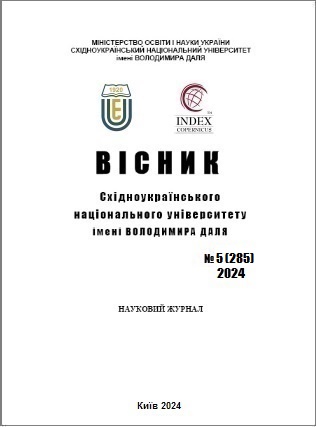Research of the optimization methods of the parameters of electronic devices for building an expert system
DOI:
https://doi.org/10.33216/1998-7927-2024-285-5-10-15Keywords:
Expert system, parameter optimization, artificial intelligence, electronic devices, mathematical modeling, genetic algorithms, neural networksAbstract
This article is devoted to the study of methods for optimizing the parameters and structure of electronic devices for building an expert design system. Emphasis is placed on the use of innovative approaches such as mathematical modeling, simulation, and artificial intelligence techniques, including machine learning, genetic algorithms, and neural networks. The use of such methods helps to increase design accuracy, automate complex processes, reduce development time, and improve productivity. The possibility of using hybrid approaches to obtain optimal configurations of devices that provide better energy efficiency and compliance with production requirements is also considered. The results of the study testify to the perspective and practical significance of these methods, which open up new opportunities for the engineering of electronic systems.
The mathematical modeling techniques discussed include SPICE (Simulation Program with Integrated Circuit Emphasis) for circuit analysis and Finite Element Method (FEM) for assessing thermal and mechanical properties, especially relevant in devices with high component density. These models allow designers to simulate and validate device performance under varied operational conditions, significantly lowering the need for physical prototypes.
Research on methods of optimizing the parameters and structure of electronic devices using artificial intelligence and expert systems shows significant potential for increasing the efficiency and quality of the design process. The use of mathematical modeling and simulations allows to reduce development time, and the introduction of machine learning methods and genetic algorithms increases the accuracy and speed of optimization. The use of design methods taking into account the constraints ensures better production compatibility, and energy optimization contributes to the efficiency of electronic systems in conditions of limited resources. Further research is aimed at expanding hybrid methods, integrating new machine learning algorithms and adapting them to specific production requirements, which will increase the flexibility and versatility of expert design systems.
References
1. Ляшук О.Л., Плекан У.М.,Цьонь О.П., Гевко Б.Р., Розвиток технологій гібридних силових установок автомобілів//Центральноукраїнський науковий вісник. Технічні науки. 2023р. м. Тернопіль. 139-146.
2. Barrett MA, Humblet O, Marcus JE, et al. Effect of a mobile health, sensor-driven asthma management platform on asthma control. Ann Allergy Asthma Immunol 2017.
3. IEEE Transactions on Industrial Electronics (https://ieeexplore.ieee.org)
4. IEEE Transactions on Neural Networks and Learning Systems (https://ieeexplore.ieee.org)
5. Journal of Electronic Testing (https://link.springer.com)
6. Damar, M., Özen, A., Çakmak, Ü. E., Özoğuz, E., et al. (2024). Super AI, Generative AI, Narrow AI and Chatbots: An Assessment of Artificial Intelligence Technologies for The Public Sector and Public Administration. Journal of AI, 8(1), 83-106. (https://doi.org/10.61969/jai.1512906)
7. Стецюк, В.З., Бабінцева Л.Ю., Чиж Ю.М., ФіногеновО.Д.,Самоненко Н.В. "Експертна система для діагностування генетичних відхилень". Medical Informatics and Engineering, № 3 (2021): 78–83.
8. Tkachenko V.Yu., Ryazantsev O.I., ModestovaT.V.. Artificial intelligence in the study of methods for optimizing the parameters and structure of electronic devices for building an expert design system//Матеріали XХVІІ міжн. наук.-практ. конф. Технологія-2024. 24 травня. 2024 р., м. Київ. 82-83.
9. IEEE Industrial Electronics and applications Conference (IFACon 2024) 4-5 November 2024. Kuala Lumpur Malaysia (https://ieeeieacon.org)
10. Arash Qodratnama, Farshad Khunjush, Mohsen Raji. A methodology for the SPICE-Compatible modelling of metal-semiconductor-metal photodetectors for nanophotonic interconnects application. Microelectronics journal. Volume 115, September 2021
(https://www.sciencedirect.com/science/article/abs/pii/S0026269221001774)
11. М.М. Масюк. Застосування методу кінцевих елементів для проведення розрахунків// Матеріали ІX Міжнародної науково-технічної конференції молодих учених та студентів. Актуальні задачі сучасних технологій – Тернопіль 25-26 листопада 2020.
12. Importance of DFM, DFT, and DFA in Product Design.(https://volansys.medium.com)
13. Kovar D. Internet of Things Applications: Introduction to Internet of Things: Industrial Internet of Things. Independently Published, 2021.

